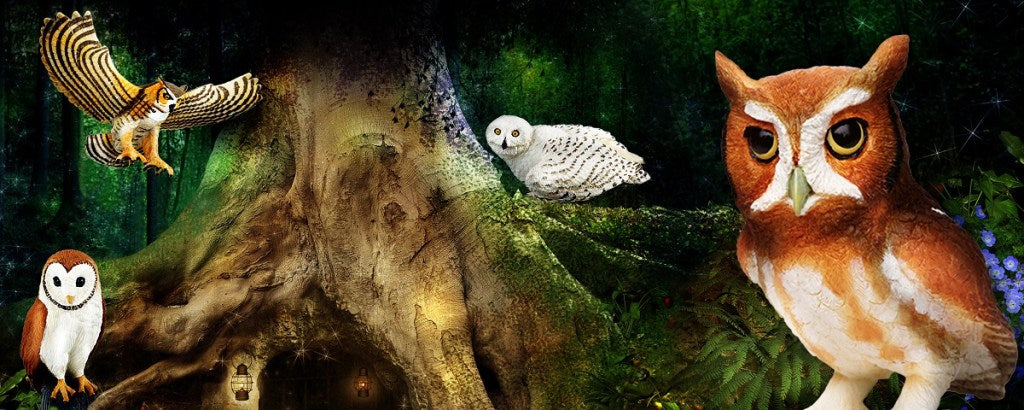
It's International Owl Awareness Day!
It’s International Owl Awareness Day! Are you aware of owls? If not, never fear! It’s not too late to learn more about these unique birds of prey on their special day!

What makes an owl an owl? Owls have several features that separate them from other birds. One such feature is the facial disc: a special arrangement of feathers that surrounds each of their large, forward-facing eyes. This disc frames the face and gives the owl the appearance of having a very large head. The feathers on these discs can be shifted to focus sounds as they travel into the owl’s ear cavity.
Though their eyes are quite large, they are fixed in a forward-facing position, meaning if an owl wants to look around it must turn its entire head. To help with this, owl necks have 14 vertebrae, which is twice the amount found in the necks of humans. This gives them the unique ability to turn their head almost all the way around, up to 270 degrees.
There are two living families of owls: Strigidae (true or typical owls) and Tytonidae (barn owls). The main difference between the two is that true owls feature circular facial discs, whereas those of barn owls are heart-shaped. Overall, there are about 225 species of owls. They can be found nearly worldwide, on every continent except Antarctica. The barn owl (Tyto alba) in particular is not only the most widespread owl species, but one of the most widespread of all bird species. It’s found in so many countries that it’s more convenient to list the places it doesn’t live: Antarctica, the far north of North America, New Zealand, the Sahara Desert in Africa, and much of Asia.
Almost all owl species are nocturnal, meaning they are most active at night. They hunt their prey using their excellent vision, which is particularly good at spotting small rodents and other animals from far away, and their specialized hearing, which they focus with their facial disc feathers. Their flight feathers are also designed to allow them to fly almost completely silently, allowing them to sneak up on prey before it even becomes aware of the owl’s presence.
Owls come in all shapes and sizes, from small screech owls that grow to less than a foot long, to the great horned owl and snowy owl, both of which can grow over two feet in length. The snowy owl, named for its white coloration, is the heaviest owl in North America, and can weigh almost seven pounds. The great horned owl is named for its “ear tufts”, a common feature on many owls. They resemble ears but are actually small skin flaps that are covered in feathers. While their exact purpose is uncertain, they are thought to help owls identify each other, and may also help the owl appear more threatening to potential predators.
Owls are important symbolic animals in many cultures. In Japan they are considered lucky, and in Western culture they are seen as symbols of intelligence and knowledge. This originates from the Ancient Greek goddess of wisdom, Athena, whose symbol was an owl. In many Native American tribes, they are seen as omens of danger and death, though the Pawnee people conversely view them as a symbol of protection.
In addition to their of their spiritual and symbolic significance, owls are an important part of the ecosystem. They are beneficial to humans, helping to control rodent and other pest populations. Despite this, owl poaching is believed to be on the rise, and habitat destruction encroaches on owls’ homes, both of which threaten the survival of numerous species. Many organizations, such as the World Owl Trust, are focused on owl conservation efforts. By raising awareness about these remarkable creatures, we can ensure that owls will be around for many generations to enjoy.

I Am Great Horned Owl - 300 pc. Puzzle
Discover more owl products HERE.




 Facebook
Facebook
 Twitter
Twitter
 Instagram
Instagram
